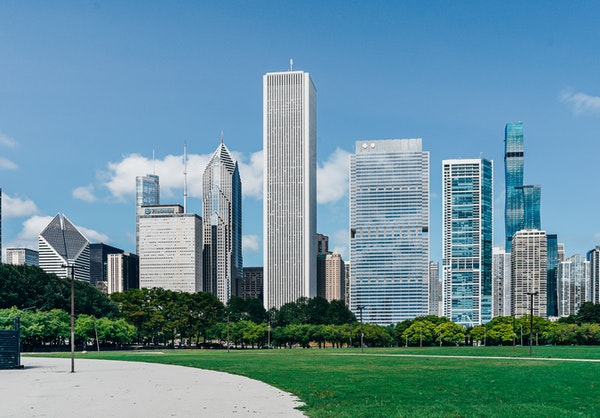
Photo by Ricardo Esquivel from Pexels.
When thinking of the things that factor into our overall health, urban design is not usually considered. We tend to believe genetics and personal health habits are the strongest influences on our health. However, the city you live in can affect your health more than you think!
What are healthy cities?
The term “healthy city” has nothing to do with the health status of its inhabitants. Instead, it refers to the city’s ability to facilitate a healthier way of life for its citizens. In the words of the World Health Organization (Europe), healthy cities are defined as “a process, not an outcome.” A processing city is one that “continually creates and improves its physical and social environments, as well as [facilitates] the expansion of the community’s resources− therefore, enabling citizens to mutually support each other in performing all the functions of life, while also developing to their maximum potential.” The ultimate goal being that community and health work hand in hand.
Making Healthier Cities
Now that you understand what a healthy city is, how can you create one? The Institute for Global Health created a list of 5 Keys to Healthier Cities.
- Air Pollution: It is important to improve the quality of the air that we breathe in highly polluted areas. Highly polluted air can contain toxic chemicals like nitrogen dioxide and black carbon− both of which are usually produced in areas with elevated traffic and frequently used public transportation services. Drastic air pollution can be an underlying cause for some of the most dangerous health conditions such as lung cancer, stroke, respiratory diseases, etc.
- Noise: Traffic jams, increased city construction, and usage of many public transportation systems all contribute to noise within urban areas. Noise population can raise the level of air pollution and may have a significant impact on your well-being in terms of stress and sleep quality. The constant noise is a result of poor urban planning and needs to be solved to improve the health of the community.
- Natural Spaces: In many studies, incorporating green spaces throughout urban areas has shown reduced stress levels, decreased crime rates, and can help facilitate improved physical and mental health by promoting regular outdoor activities. Having green spaces can only help urban communities!
- Physical Activity: It’s no secret that staying active has a huge impact on your overall health. Incorporating more bike lanes and sidewalks into a city’s design will help support increased opportunities for outdoor physical activity. Not only will it allow the residents to stay active, but it also helps with the air and noise pollution problem while decreasing the amount of public transportation and car usage.
- Temperature: Cities with large buildings and little to no green spaces tend to have higher temperatures than surrounding areas. This “urban heat island” phenomenon can increase the chances of resident death from cardiovascular and respiratory diseases. Reducing high temperatures should be considered for improving future urban designs.
Urban health has been severely affected due to poor city design. There are many ways to avoid urban health crises by prioritizing these changes in order to improve the quality of life within the community.
Got Medicare Questions?
We hope that this information on healthy cities is useful to you.
Let us help you answer your questions so that you can get back to the activities that you enjoy the most.
Call (888) 446-9157, click here to get an INSTANT QUOTE, or leave a comment below!
See our other websites:

